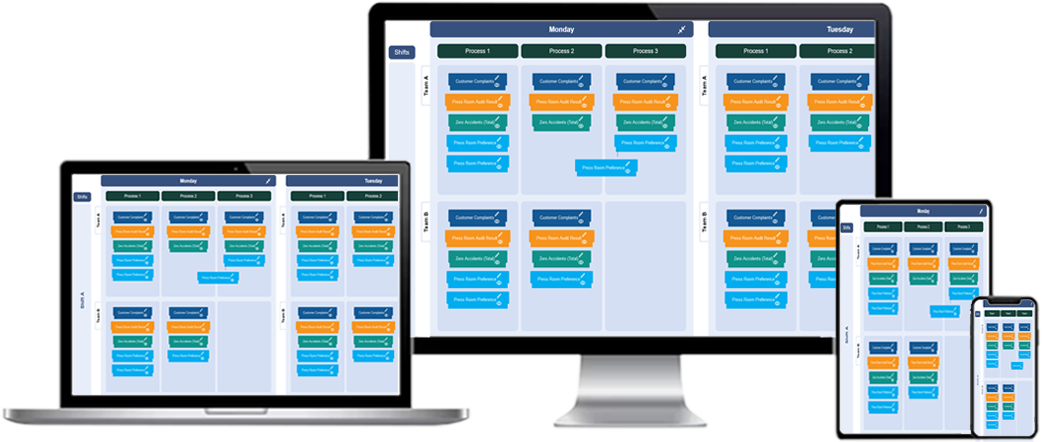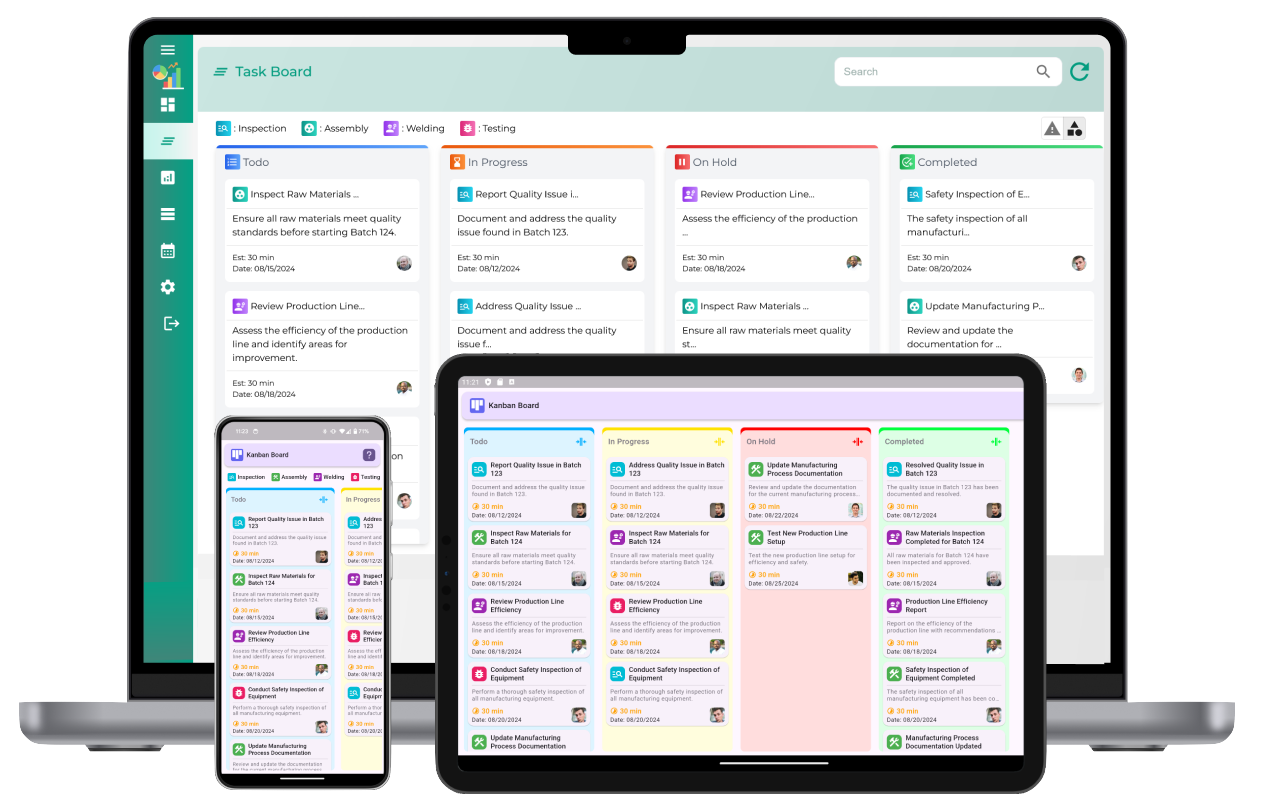A T Card board is a powerful visual management tool used by organizations to manage tasks, workflows, and projects. Originally derived from physical T cards that were inserted into a board, this method has evolved into a digital format, enhancing its functionality and ease of use. The T Card system offers a clear and organized way to visualize tasks and processes, providing teams with a way to track progress, prioritize actions, and collaborate efficiently. By adapting the traditional T Card system to the digital age, businesses can streamline operations and improve productivity.

What is a T Card Board?
A T Card board is a visual management tool designed to represent tasks, activities, or processes as cards on a board. Each card represents a specific task, project, or item within a workflow, which can be moved across different stages, such as “To Do,” “In Progress,” and “Completed.” The simplicity of the T Card system makes it highly adaptable, allowing it to be used across a wide range of industries and applications, from project management to inventory control. In a digital setting, these boards are interactive, enabling real-time collaboration, task tracking, and performance monitoring.
Key Features of T Card Board
The T Card board system offers several features that make it an efficient and effective tool for task and project management:
- Visual Workflow Management: The T Card board uses a visual layout to represent various stages of tasks or processes, making it easy to track progress and understand the current status at a glance.
- Customizable Workflow: Users can customize the stages of the board to fit their unique needs, whether it’s for project management, task tracking, or other operations. This flexibility allows businesses to adapt the system to their specific processes and requirements.
- Real-Time Updates: In a digital T Card board, changes are reflected in real-time, providing up-to-date status on tasks and workflows. This ensures that team members and managers always have the latest information at their fingertips.
- Collaboration and Communication: The T Card board supports collaboration by allowing team members to add comments, upload files, and share updates on tasks. This enhances communication and keeps everyone aligned on project goals.
- Task Prioritization: The system enables users to assign priorities to tasks, ensuring that the most urgent items are addressed first. This feature helps teams stay focused and aligned with business objectives.
- Performance Tracking: By using the T Card board, businesses can track progress and performance metrics, which provides valuable insights into how work is progressing and where improvements may be needed.
How to Use a T Card Board
Using a T Card board effectively involves organizing tasks, setting priorities, and regularly reviewing progress. Here are some steps for getting started:
- Set Up the Board: Begin by setting up the stages or columns of the T Card board. Common stages include “To Do,” “In Progress,” and “Completed,” but these can be customized based on the needs of your project or workflow.
- Create Cards: For each task, create a card that includes important details, such as a description of the task, the responsible person, the due date, and any other relevant information. Cards are then placed in the appropriate stage based on their current status.
- Track and Update: As work progresses, move the cards across the board to reflect their status. Team members should update the cards with progress notes, comments, and any necessary adjustments.
- Review Performance: Regularly review the T Card board to assess progress, identify bottlenecks, and make adjustments as needed. Managers can use the board to evaluate task completion rates and ensure the team is staying on track.

Benefits of Using a T Card Board
Implementing a T Card board system offers a range of benefits to organizations, improving productivity and efficiency:
1. Enhanced Organization
The visual nature of the T Card board makes it easy to organize tasks and workflows. Tasks are clearly represented as cards that can be easily moved across the board, helping to prevent confusion and ensuring that everyone is aligned on the current state of work.
2. Improved Visibility
By displaying all tasks and processes on one board, the T Card system provides clear visibility into the status of each item. This transparency helps team members and managers quickly identify bottlenecks, delays, or tasks that require attention.
3. Increased Efficiency
The T Card board streamlines task management by enabling real-time updates and easy movement of tasks through different stages. This reduces the need for lengthy status meetings and manual tracking, allowing teams to focus on completing tasks more efficiently.
4. Better Collaboration
The T Card board facilitates collaboration by providing a central location where team members can communicate, share updates, and contribute to the success of tasks and projects. This improves team coordination and helps ensure that all relevant information is shared.
5. Task Prioritization and Focus
With the ability to prioritize tasks, the T Card board ensures that teams focus on high-priority items first. This helps organizations align their efforts with strategic objectives and ensures that important tasks are completed on time.
6. Flexibility and Adaptability
The T Card board is highly flexible and can be adapted to suit a variety of workflows and processes. Whether used for project management, production tracking, or customer service management, the T Card system can be customized to meet the needs of different industries and businesses.
Challenges of Using a T Card Board
While the T Card board system offers numerous advantages, there are also some challenges that organizations should be aware of:
- Overloading the Board: When too many tasks or cards are added to the board, it can become overwhelming and difficult to manage. It’s important to ensure that the board remains organized and that only relevant tasks are tracked.
- Lack of Detailed Information: In some cases, T Card boards may not provide enough detail for more complex tasks. For intricate projects, additional tools or resources may be required to capture all necessary information.
- Dependency on Technology: For digital T Card boards, organizations may face technical challenges, such as system downtime or integration issues with other software tools. It’s important to have a reliable system in place to minimize disruptions.
T Card board
What is a T-Card Board?
A T-Card Board is a visual management tool used to track tasks, workflows, or projects in an organized manner using color-coded cards on a board.
How does a T-Card Board work?
Tasks or items are represented by colored cards on a board, and as the tasks progress, the cards are moved across columns representing different stages of completion.
What are the benefits of using a T-Card Board?
The T-Card Board offers enhanced visibility, real-time tracking of tasks, easier collaboration, and improved efficiency in task management.
What is the purpose of the T-Card system?
The T-Card system helps organize tasks visually, making it easier to prioritize work, monitor progress, and identify potential bottlenecks.
How do I set up a T-Card Board?
To set up a T-Card Board, you need a board (physical or digital), cards (color-coded), and columns representing different stages of tasks. Then, assign each card to a task and move it as the task progresses.
Can a T-Card Board be used for project management?
Yes, T-Card Boards are effective in project management by visually tracking tasks, deadlines, and resources across different project stages.
Can I customize the T-Card Board for my business needs?
Yes, T-Card Boards can be easily customized to fit your business's workflow, using different columns for task stages or categories relevant to your work processes.
Are T-Card Boards only useful for manufacturing?
No, T-Card Boards can be used in various industries such as healthcare, construction, retail, and software development, wherever task management and workflow visualization are needed.
How does the T-Card Board improve team collaboration?
By providing a clear, shared visual representation of tasks, the T-Card Board fosters communication and collaboration among team members, ensuring everyone is aligned on priorities.
Is a T-Card Board suitable for small teams?
Yes, T-Card Boards are great for small teams as they provide a simple and cost-effective way to track tasks and ensure clear communication and accountability.
Can a T-Card Board be used digitally?
Yes, many software solutions offer digital T-Card Board systems that allow for remote access, real-time updates, and easier collaboration among distributed teams.
What industries benefit the most from using a T-Card Board?
Manufacturing, healthcare, construction, and software development industries benefit the most, as T-Card Boards help visualize workflows, improve task tracking, and enhance productivity.
What type of cards are used on a T-Card Board?
Color-coded cards are used to represent tasks or items. The color scheme typically corresponds to different categories, priorities, or stages of completion.
How do T-Card Boards improve task prioritization?
By visually representing tasks and their deadlines, T-Card Boards help prioritize tasks more effectively and ensure critical tasks are addressed on time.
Can T-Card Boards help identify bottlenecks in workflows?
Yes, T-Card Boards make it easier to spot bottlenecks in workflows, as tasks that stay too long in one column can indicate delays that need attention.